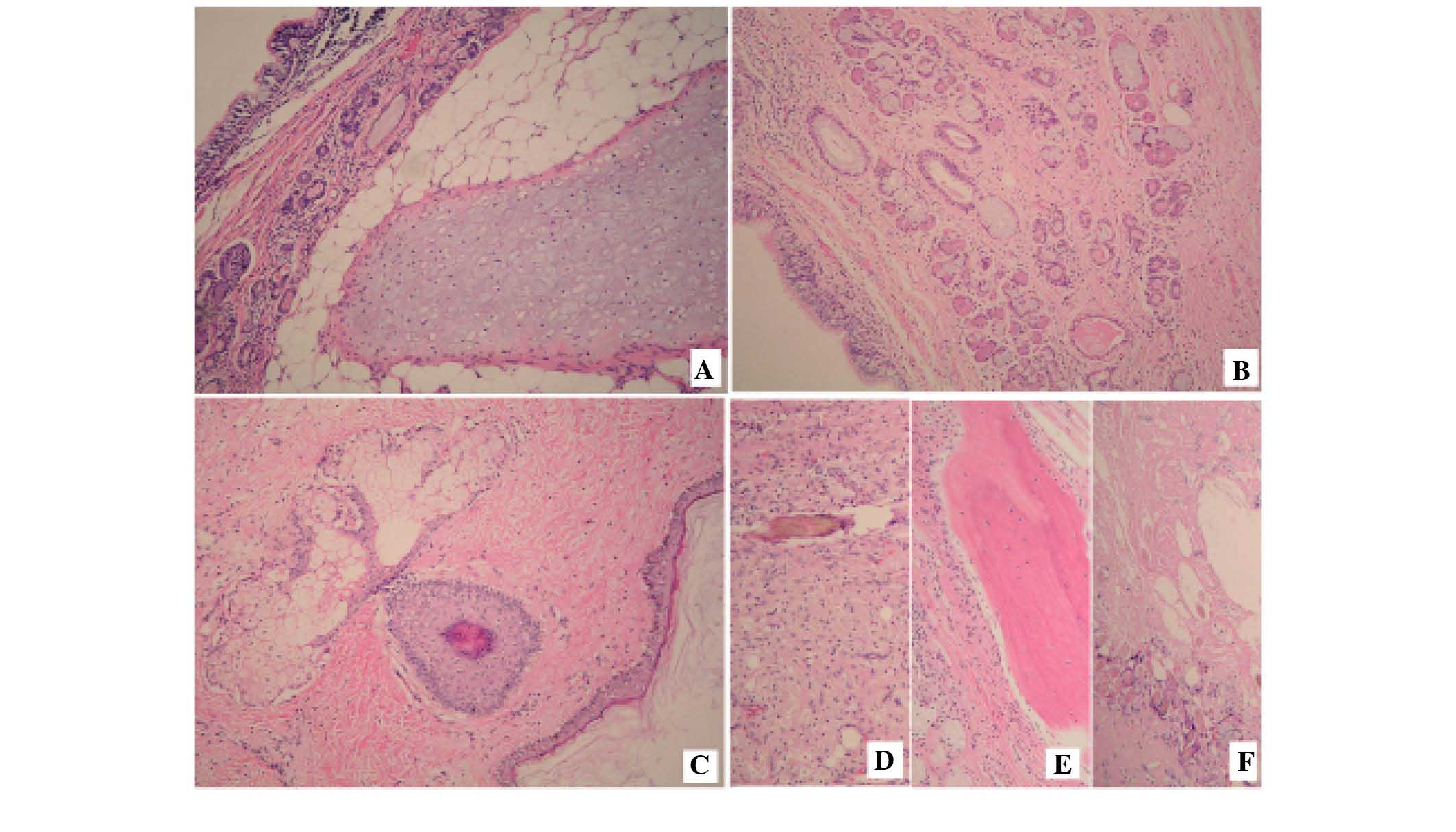An uncommon recurrence of an immature teratoma: A case report
- Authors:
- Xuelu Li
- Dandan Zhu
- Li Lv
- Jian Yu
View Affiliations
Affiliations: Department of Breast Surgery, The Second Hospital of Dalian Medical University, Dalian, Liaoning 116023, P.R. China, Department of Critical Care Medicine, The Second Hospital of Dalian Medical University, Dalian, Liaoning 116023, P.R. China, Department of Pathology, The Second Hospital of Dalian Medical University, Dalian, Liaoning 116023, P.R. China
- Published online on: February 19, 2016 https://doi.org/10.3892/ol.2016.4254
-
Pages:
2453-2456
Metrics: Total
Views: 0 (Spandidos Publications: | PMC Statistics: )
Metrics: Total PDF Downloads: 0 (Spandidos Publications: | PMC Statistics: )
This article is mentioned in:
Abstract
A 24-year-old female who was previously diagnosed with an immature, right ovarian teratoma was referred to The Second Hospital of Dalian Medical University (Dalian, China) due to abdominal pain. The patient had previously undergone a laparotomy and right ovarian oophorectomy. Despite this, at 10 years post‑surgery, the patient developed extensive abdominal metastases, in conjunction with elevated serum cancer antigen (CA)-125 and CA19-9 levels. The patient had a high risk of recurrence, and the liver and spleen metastases were subsequently diagnosed as mature teratomas. In order to prevent the possibility of disease recurrence, frequent post‑surgical follow-up, consisting of imaging analysis and the testing of serum markers, is required. Regarding the published literature, there have been no other patients presenting with a giant teratoma with associated metastasis. Due to the lack of regular follow-up appointments in China, the tumor in the present study was not recognized until too late. Therefore, to increase the successful detection of recurrent teratomas, a longer follow‑up period is necessary for patients who present with a high risk of recurrence.
View References
|
1
|
Saba L, Guerriero S, Sulcis R, Virgilio B,
Melis G and Mallarini G: Mature and immature ovarian teratomas: CT,
US and MR imaging characteristics. Eur J Radiol. 72:454–463. 2009.
View Article : Google Scholar : PubMed/NCBI
|
|
2
|
Chang CF and Lin CK: A case of recurrent,
bilateral ovarian mature teratoma in a young woman. BMC Womens
Health. 14:572014. View Article : Google Scholar : PubMed/NCBI
|
|
3
|
Barwad A, Dey P and Shivalingam J:
Metastatic of mature component in a treated case of immature
teratoma diagnosed on fine-needle aspiration cytology of the liver.
Diagn Cytopathol. 39:711–713. 2011. View
Article : Google Scholar : PubMed/NCBI
|
|
4
|
Norris HJ, Zirkin HJ and Benson WL:
Immature (malignant) teratoma of the ovary: A clinical and
pathologic study of 58 cases. Cancer. 37:2359–2372. 1976.
View Article : Google Scholar : PubMed/NCBI
|
|
5
|
Byrd K, Stany MP, Herbold NC, Leath CA III
and Hamilton CA: Growing teratoma syndrome: Brief communication and
algorithm for management. Aust NZ J Obstet Gynaecol. 53:318–321.
2013. View Article : Google Scholar
|
|
6
|
Ustunyurt E, Gungor T, Iskender C,
Ustunyurt BO, Bilge U and Mollamahmutoglu L: Tumor markers in
mature cystic teratomas of the ovary. Arch Gynecol Obstet.
279:145–147. 2009. View Article : Google Scholar : PubMed/NCBI
|
|
7
|
Bast RC Jr, Badgwell D, Lu Z, Marquez R,
Rosen D, Liu J, Baggerly KA, Atkinson EN, Skates S, Zhang Z, et al:
New tumor markers: CA125 and beyond. Int J Gynecol Cancer. 15(Suppl
3): 274–281. 2005. View Article : Google Scholar : PubMed/NCBI
|
|
8
|
Harada M, Osuga Y, Fujimoto A, Fujimoto A,
Fujii T, Yano T and Kozuma S: Predictive factors for recurrence of
ovarian mature cystic teratomas after surgical excision. Eur J
Obstet Gynecol Reprod Biol. 171:325–328. 2013. View Article : Google Scholar : PubMed/NCBI
|












